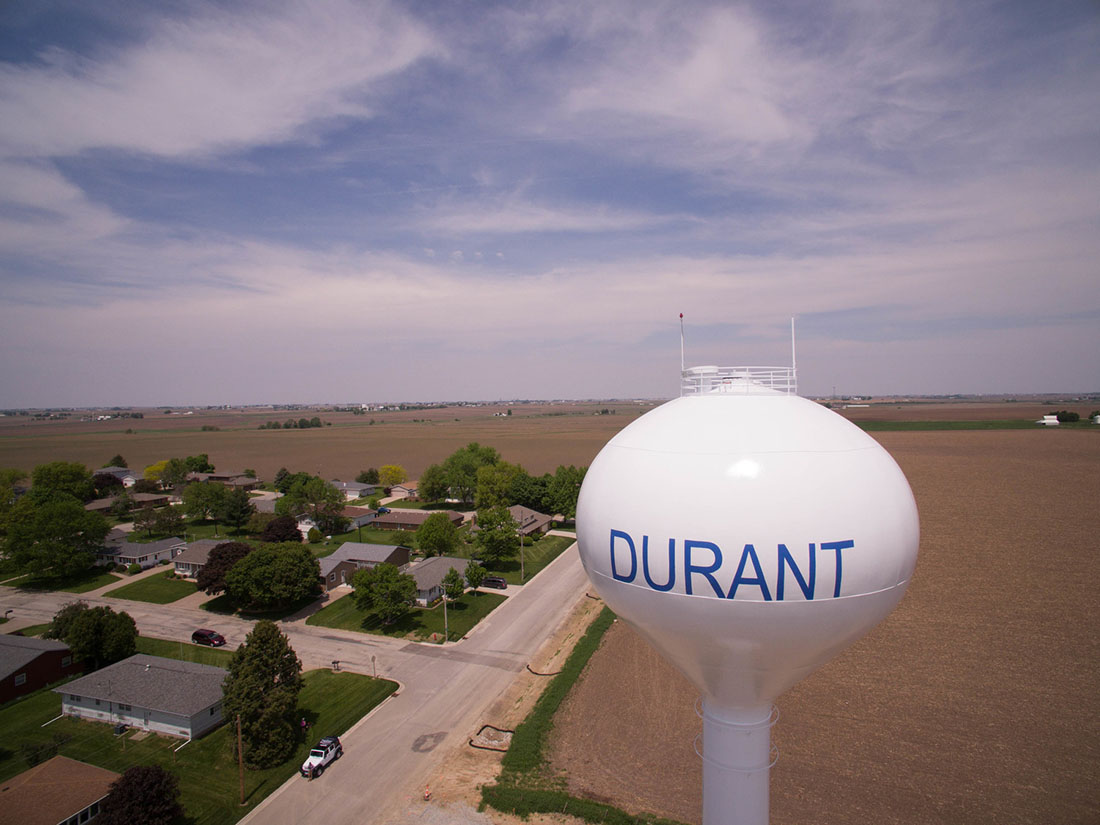The motto of the City of Durant in east-central Iowa is “Prime for Growth,” and this statement couldn’t be closer to the truth. A small, but mighty community of just over 1,800, Durant isn’t simply hoping for growth — they’re actively pursuing it — and investing in upgrades to their water systems and municipal infrastructure in preparation to meet the challenge. Originally a small agricultural town, the City has been experiencing a steady influx of new residents and commerce due to their location on the outskirts of the greater Quad Cities Metro.
City officials asked MSA to lead a comprehensive study of their water system as a part of their long-term water system improvement Master Plan. The study assessed Durant’s existing water system capabilities and ascertained a need for greater system capacity in order to support population and geographic growth. It helped identify deficiencies and made recommendations to improvements in all three water systems: potable water, wastewater and stormwater.
Potable water system upgrades boost volume
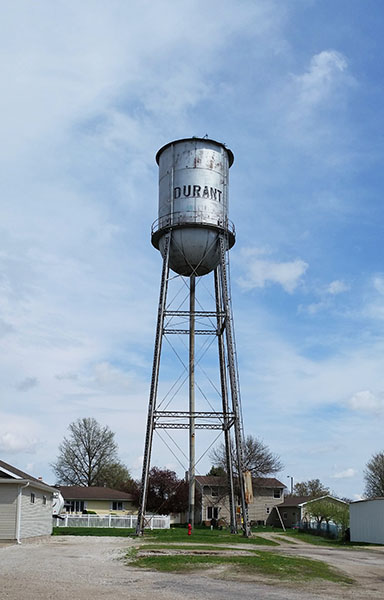
Old, 50,000-gallon water tank in need of replacement in the City of Durant, Iowa
To ensure that both current and future residents of Durant have a safe, dependable supply of drinking water, and to ensure the system is large enough to meet the demands of any fire-related emergencies, the City recognized an imminent need for increased water tank capacity. As MSA’s water study suggested, this led to the demolition of an older, inefficient 50,000-gallon water tower in 2016, replaced with the construction of a new tank in the northeast corner of the City. The decision would serve to both increase water distribution capacity and allow for continued development along Durant’s eastern boundary.
MSA was asked to provide design services for the project, which included construction of a new 250,000-gallon, 108-foot-tall, single-pedestal elevated storage tank, with overflow weir box, piping and all necessary electrical and SCADA-related systems. Additional water main was installed along the adjacent 14th Avenue in order to boost distribution via a series of new loops on cross streets. The project was completed in 2018 and has been seamlessly providing residents with quality water since.
Wastewater treatment facility upgrades surpass compliance
The City had just completed major upgrades to their wastewater treatment facility (WWTF) in 1999. Shortly thereafter, in 2003, the Iowa DNR proposed establishing a new total maximum discharge limit (TMDL) for ammonia for Mud Creek, the receiving stream for Durant’s treatment facility effluent. The TMDL was approved by the Environmental Protection Agency, which solidified the new limits, even though they were even lower than the IDNR’s newly adopted water quality standard limits. In addition to the new, more stringent ammonia limits, the City’s National Pollutant Discharge Elimination System (NPDES) discharge permit would now also include tighter regulations for E. coli and dissolved oxygen.
The City hired MSA in 2007 to complete a facility plan to determine what improvements would be required to bring operations into compliance. The City’s existing WWTF consisted of a headworks building, primary clarifier, trickling filter and final clarifiers, a system that did not meet the new ammonia, E. coli, or dissolved oxygen limits.
MSA evaluated several alternatives and recommended that the City construct a new activated sludge plant that would be capable of treating ammonia down to the limits that would be included in the City’s future NPDES discharge permit. In addition, an equalization lagoon was proposed so the total flow through the activated sludge plant could be limited during high flow events, thus decreasing the total ammonia loading discharged. UV disinfection and a post-aeration tank were also proposed to meet upcoming E. coli and dissolved oxygen limits.
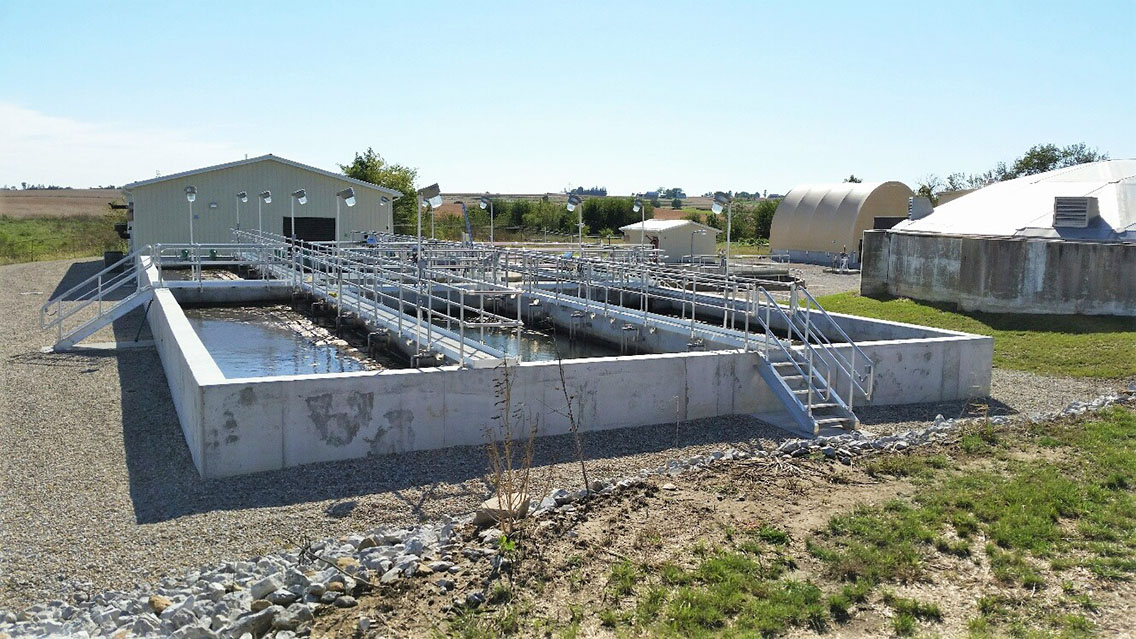
Although the City had just recently invested in major facility upgrades, they agreed to further fund the needed improvements. This investment in a sound and sustainable operation would protect water quality and safely treat wastewater for decades to come. The final project included the construction of a new activated sludge, extended aeration plant with aerobic digestion and clarification, UV disinfection and belt filter presses to dewater the sludge. A new building was erected to house the facility laboratory, office, SCADA controls, utility, blowers, dewatering room, motor control center, restrooms and shower.
Choosing an activated sludge system, designed with provisions so that the City would easily comply with future nitrogen and phosphorus limits, was a bold and proactive investment in their success. Construction of the new facility began in the summer of 2015 and was completed in the fall of 2016.
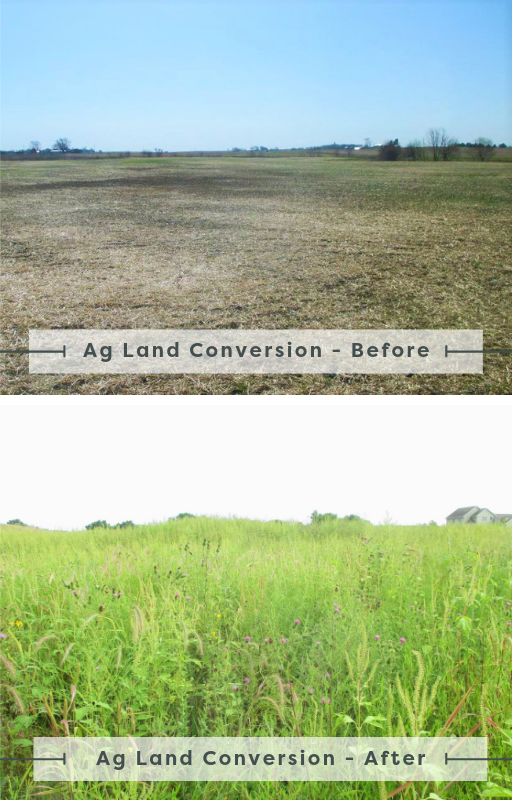
Stormwater solutions protect resources
The third component of Durant’s successful water system overhaul was an investment in stormwater solutions. With assistance from MSA, an Iowa Department of Natural Resources (IDNR) Sponsored Project State Revolving Fund (SRF) loan was secured to help convert agricultural lands back to native prairie, create a new bioswale and install permeable pavers in a portion of Durant’s downtown. All three projects were designed to improve the quality of stormwater runoff through plantings and various filtration systems.
Conversion of the agricultural land involved the treatment and preparation of approximately 8.75 acres of existing crop land at the WWTF site with the construction of two “Missouri crossings” — or low-water crossings — along Mud Creek, and the establishment of native seeding throughout. Plantings are completed and are currently in the maintenance period for establishment. The former Ag land is regenerating a variety of native plants and wildflowers.
The bioswale component involved construction of a conveyance swale designed to promote infiltration into a subdrain. The bioswale created proper drainage to channel and convey stormwater along the rear of an industrial subdivision which contained large roof areas, resulting in significant runoff. Creation of the bioswale included the installation of approximately 480 linear feet of 6-inch perforated subdrain, which now aids in the collection and removal of pollutants, silt and debris.
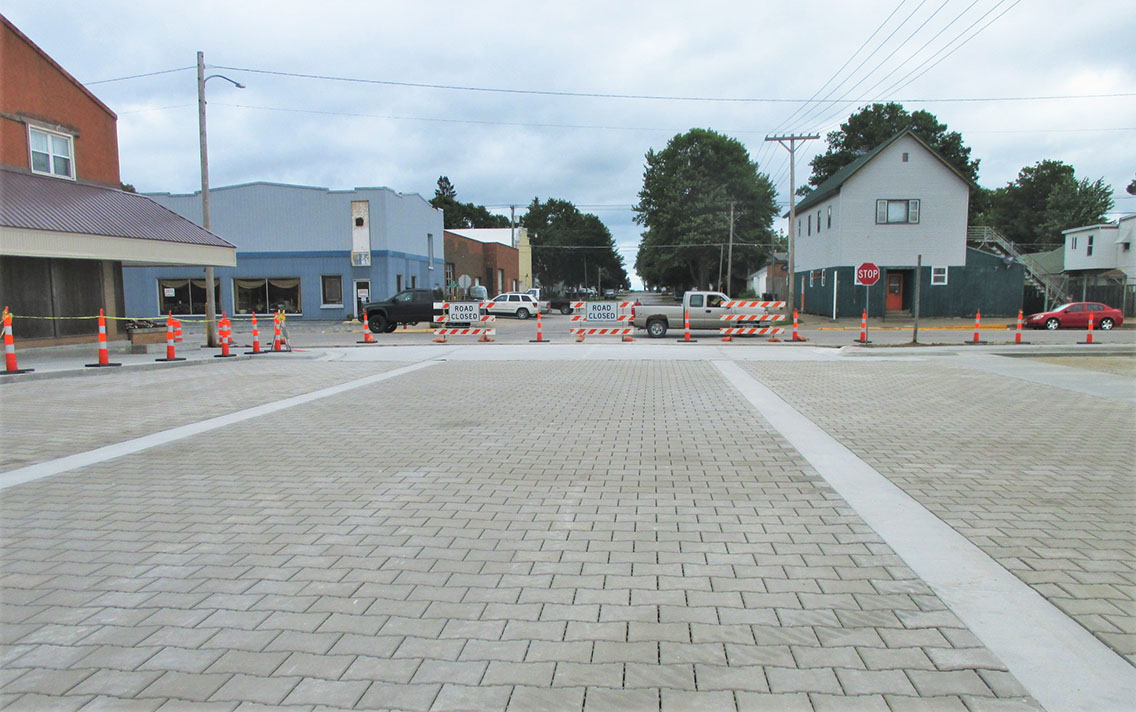
Permeable pavers were selected as the new surface of choice to cover a 5,400-square-foot area along Durant’s Sixth Avenue in front of the local grocery store. The pavers were installed on a 6-inch permeable base course with a 2-foot minimum stormwater storage chamber subbase. The system was designed to receive high volumes of stormwater that would flow through the subbase filtration and storage chamber prior to entering the stormwater sewer system, improving the water quality of the stormwater runoff. A flow test conducted by the City of Durant proves that the new permeable pavers can absorb a 3,000-gallon water dump with no runoff.
Together, this trio of infrastructure improvement projects has made a significant and lasting impact on the supply, quality, capacity, and protection of the water systems of Durant.
